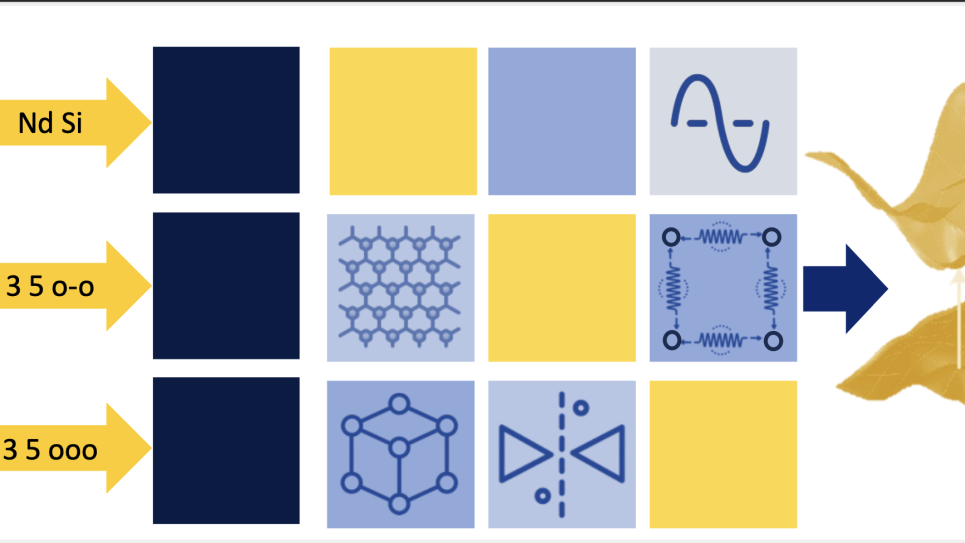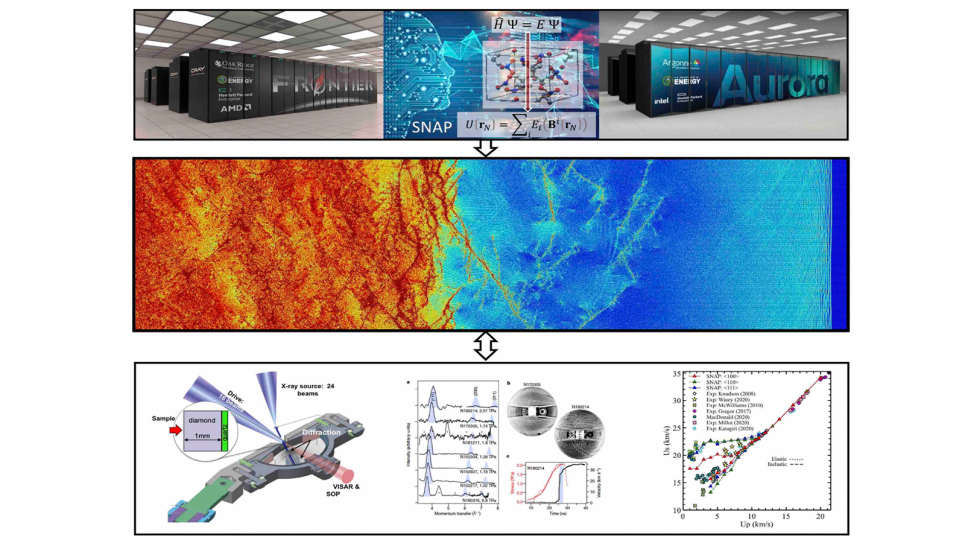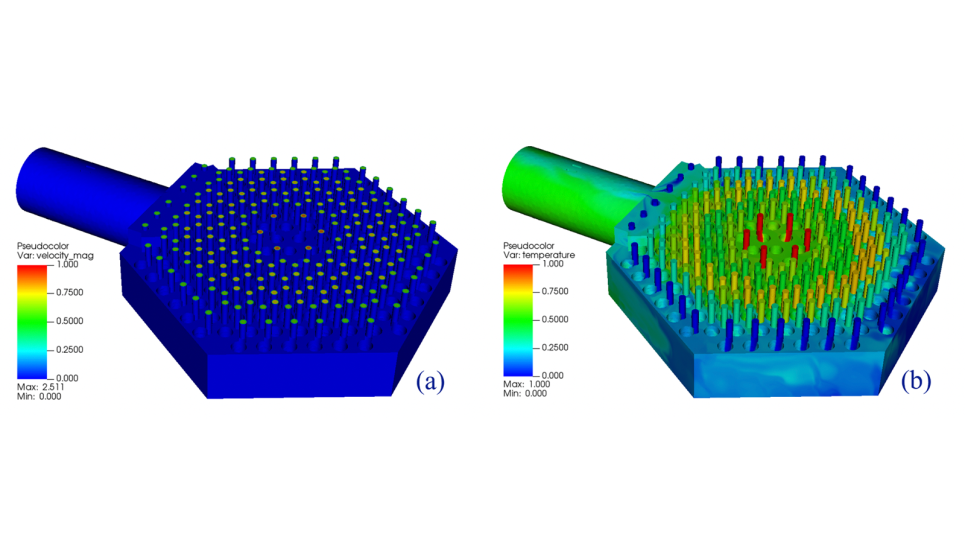Vibrations at the heart of fuel rod failures
Failures of the fuel rod elements used to power U.S. nuclear power plants are rare. When they do fail, however, one of the most common causes is flow-induced vibration of fuel assembly components. In fact, the Electric Power Research Institute reports that more than 70 percent of all fuel failures in pressured water reactors are due to grid‐to‐rod fretting.
Recent advances and state-of-the-art resources set stage for success
Using resources at the Argonne Leadership Computing Facility, scientists are investigating vibrations caused by turbulent flow in the core of light‐water reactors—the major cause of fuel failure and a recognized bottleneck to optimal fuel utilization. This research is especially well timed, given recent advances in high-fidelity computational fluid dynamics that make multi-pin large-eddy simulations (LES) computationally within reach, coupled with fluid/structural codes that have reached a state of maturity far beyond what existed a decade ago.
Homegrown code used to demystify vibration
Researchers will conduct LES simulations using the Argonne‐developed code Nek5000 to better understand vibration-driven forces resulting from the turbulent fluid flow in multi-pin configurations of realistic LWR fuel assembly geometries. These simulations will then be loosely coupled to the highly scalable finite-element structural mechanics simulator, Diablo.


